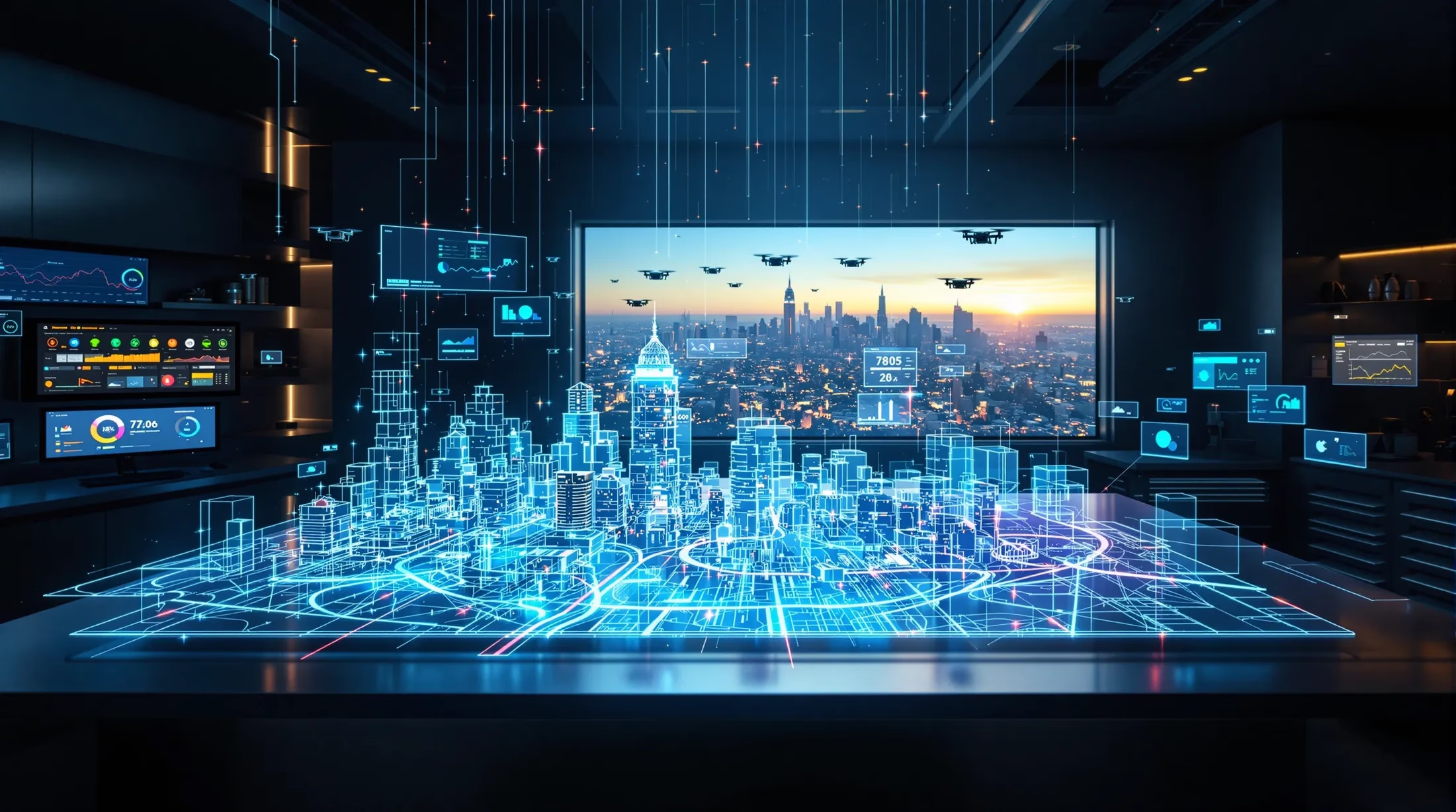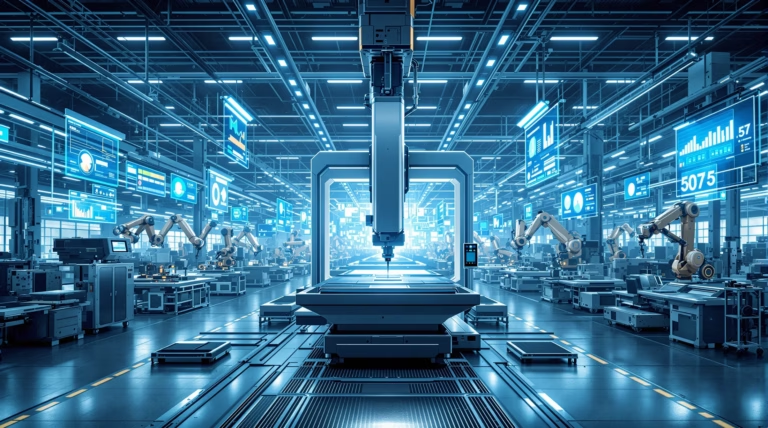Digital Twin: Understanding the Technology and Its Applications
Discover how digital twin technology is revolutionizing industries by creating virtual replicas that mirror physical objects and systems in real-time. From manufacturing optimization to urban planning, this comprehensive guide explores the transformative power of digital twins and their impact on modern innovation.
What is a Digital Twin?
A digital twin is a virtual representation of a physical object, system, or process that mirrors its real-world counterpart with exceptional accuracy. This technology creates a dynamic digital model that synchronizes with the physical entity in real-time, allowing for continuous monitoring, analysis, and optimization. Unlike traditional simulations, digital twins maintain an ongoing connection to their physical counterparts through sensors, IoT devices, and data streams.
The concept extends beyond simple modeling—digital twins capture the complete essence of physical entities, including their behavior, characteristics, and performance metrics. They serve as comprehensive digital counterparts that evolve as their physical twins change, providing a living, breathing digital reflection that enables testing, prediction, and improvement without affecting the actual physical object.
The Origin and Evolution of Digital Twin Technology
The concept of digital twin technology first emerged during NASA’s Apollo space missions in the 1960s, although the term itself wasn’t coined until decades later. NASA engineers created duplicate systems on Earth to mirror those aboard spacecraft, allowing them to test, troubleshoot and diagnose problems remotely. This primitive version of a digital twin helped save the Apollo 13 mission when an oxygen tank exploded, enabling engineers to simulate possible solutions using the ground-based twin before implementing them in space.
Dr. Michael Grieves formally introduced the digital twin concept in 2002 during a University of Michigan presentation on Product Lifecycle Management. The technology has since evolved dramatically, accelerated by advances in IoT, cloud computing, and artificial intelligence.
Components of a Digital Twin
- Physical Object – The real-world entity equipped with sensors capturing critical data points like temperature, pressure, and performance metrics
- Digital Representation – The virtual counterpart constructed using modeling techniques, simulation software, and visualization tools
- Communication Infrastructure – Bi-directional channels enabling seamless data flow between physical and digital entities through IoT technology
Applications of Digital Twin Technology
Digital twin technology has rapidly evolved from a conceptual framework to a transformative force across multiple industries. By integrating real-time data, simulation capabilities, and advanced modeling techniques, digital twins create virtual replicas that synchronize with physical counterparts to facilitate monitoring, analysis, and optimization.
Digital Twin in Manufacturing
- Real-time monitoring of production lines and equipment performance
- Simulation of production workflows and new configurations
- Optimization of ergonomics and safety protocols
- Predictive maintenance through performance pattern analysis
- Virtual product design testing and validation
- Inventory management and tooling design optimization
The technology has proven particularly valuable for complex manufacturing scenarios where traditional modeling falls short, offering unprecedented visibility into interdependent systems and helping companies achieve both operational excellence and innovation objectives.
Digital Twin in Healthcare
Digital twin technology is revolutionizing healthcare through personalized virtual models of patients, organs, and biological systems. These sophisticated digital replicas integrate multiple data sources to provide comprehensive patient insights:
- Medical imaging data and real-time physiological measurements
- Genetic information and patient history
- Treatment response simulations
- Surgical planning scenarios
- Personalized care plan development
At the system level, digital twins are transforming healthcare operations through:
| Application Area | Benefits |
|---|---|
| Hospital Management | Resource optimization, patient admission prediction, workflow streamlining |
| Pharmaceutical Research | Accelerated drug development, compound interaction simulation, clinical trial optimization |
| Clinical Decision-Making | Data integration, actionable insights, personalized treatment planning |
Digital Twin in Automotive
The automotive industry leverages digital twin technology across the entire vehicle lifecycle. Manufacturers create comprehensive virtual models encompassing all vehicle systems, enabling:
- Pre-production design testing and validation
- Virtual simulation of thousands of driving scenarios
- Autonomous vehicle algorithm development
- Predictive maintenance based on real-time data
- Remote troubleshooting and software updates
- Production line optimization
Digital Twin in Smart Cities
Smart cities employ digital twins to create comprehensive virtual urban environments that integrate data from multiple sources. These systems enable real-time monitoring and optimization of:
- Traffic patterns and pedestrian flows
- Energy consumption and distribution
- Air quality and environmental metrics
- Emergency response protocols
- Infrastructure planning and maintenance
- Public transportation efficiency
Benefits of Digital Twin Technology
Digital twin technology transforms organizational operations through virtual replication, enabling risk-free innovation and enhanced decision-making. The technology delivers measurable improvements across multiple operational dimensions:
- Enhanced productivity through process optimization
- Reduced downtime via predictive maintenance
- Cost savings from minimized physical prototyping
- Improved decision-making through data integration
- Increased operational efficiency and resource management
Enhancing Efficiency and Reducing Costs
Digital twin technology dramatically enhances operational efficiency through comprehensive system visibility. Organizations can leverage virtual replicas for real-time monitoring and analysis, enabling them to:
- Identify operational bottlenecks and inefficiencies
- Streamline existing workflows and processes
- Optimize resource allocation strategies
- Simulate production configurations virtually
- Reduce waste and operational costs
- Accelerate decision-making processes
The cost reduction benefits extend across multiple operational areas:
| Area | Cost Reduction Impact |
|---|---|
| Product Development | Reduced physical prototyping, accelerated testing cycles, faster time-to-market |
| Resource Management | Optimized allocation, reduced consumption, improved asset utilization |
| Energy Efficiency | Lower consumption rates, improved sustainability, reduced operational costs |
Improving Safety and Reliability
Digital twin technology enhances safety by enabling virtual testing of hazardous scenarios without risking physical assets or human wellbeing. This capability proves particularly valuable in high-risk industries such as aerospace, energy, and manufacturing.
- Simulation of extreme conditions and equipment failures
- Development of robust safety protocols
- Early identification of system vulnerabilities
- Implementation of preventive safety measures
- Continuous monitoring of operational parameters
- Predictive maintenance scheduling
Challenges and Ethical Considerations
The implementation of digital twin technology presents significant challenges across technical and organizational dimensions. Organizations must address complex data integration requirements, manage computational demands, and navigate change management processes. Critical considerations include:
- Integration of disparate data sources and systems
- Maintenance of data quality and consistency
- Management of computational requirements
- Implementation of change management strategies
- Development of specialized expertise
- Enhancement of cybersecurity protocols
Data Integration and Compliance
Data integration represents a fundamental challenge in digital twin implementation, requiring sophisticated solutions for:
| Challenge Area | Requirements |
|---|---|
| Data Harmonization | Integration of multiple data sources, formats, and update frequencies |
| System Architecture | Real-time synchronization capabilities, middleware solutions, system upgrades |
| Compliance Management | Data privacy protocols, security measures, governance frameworks |
| Regulatory Adherence | Industry-specific standards, audit capabilities, access controls |
Ethical Implications in Healthcare
Digital twin technology in healthcare introduces complex ethical challenges beyond technical implementation. Patient-specific digital twins, which create virtual replicas of individuals or their organs through personal health data integration, raise significant concerns regarding:
- Patient consent and data ownership rights
- Privacy protection and information security
- Data sharing across healthcare networks
- Comprehension of virtual representation usage
- Security measures against unauthorized access
The technology’s implementation raises concerns about healthcare equality and accessibility. The sophisticated infrastructure and expertise required for digital twin applications may create disparities between healthcare institutions, potentially leading to:
| Challenge | Impact |
|---|---|
| Resource Distribution | Limited availability in under-funded healthcare settings |
| Access Inequality | Creation of two-tiered healthcare systems |
| Algorithmic Bias | Potential discrimination against specific demographic groups |
The Future of Digital Twin Technology
Digital twin technology represents a sophisticated virtual replication system that mirrors physical entities, processes, and systems with unprecedented accuracy. These digital counterparts continuously evolve through real-time data synchronization, enabling comprehensive monitoring and optimization without physical intervention.
Integration with IoT and Extended Reality
The Internet of Things (IoT) provides the crucial infrastructure for digital twin implementations through continuous data collection from physical assets. This creates a dynamic feedback loop where:
- IoT sensors capture real-time operational data
- Digital twins transform raw data into actionable insights
- Extended Reality (XR) enables immersive interaction
- Stakeholders can visualize and manipulate virtual components
- Maintenance teams access instant performance metrics
Emerging Trends and Innovations
Autonomous digital twins represent a significant advancement, operating with minimal human intervention through AI-driven self-optimization. These systems can automatically reconfigure parameters based on changing conditions, marking a substantial evolution in digital twin capabilities.
- Self-optimizing production systems
- Cross-domain integration for complex challenges
- Cloud-based platform accessibility
- No-code interface implementation
- Quantum computing integration potential
- Molecular-level simulation capabilities



